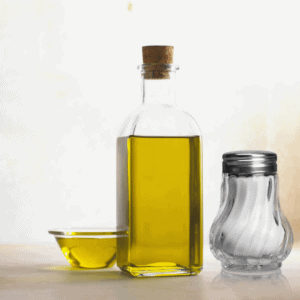Because of COVID-19, many people find that they have more opportunity to cook healthy meals at home. Therefore, it’s essential to have a diet plan that is enjoyable, satisfying and fulfills your nutrition needs. If you are looking for a way of eating that is great for your physical and mental well-being and allows you to eat food you actually like, the macrobiotic diet is for you. It promotes stability, boosts your moods and energy and promotes long term health and wellbeing. However, what is macrobiotic cooking? And how does one make a healthy meal? Let’s take a look!
What is the Macrobiotic Diet?
Macrobiotics is a plant-based diet that improves not only physical health, but also spiritual and mental health. Plant-based foods that you can eat are categorized as grains, beans, vegetables, soups, seeds, nuts, fruits, naturally pickled and fermented foods and mild beverages. In addition, you should minimize or avoid eggs, dairy, and animal foods. Concentrate more on adding than minimizing. As you add more healthy foods into your diet, you naturally decrease the unhealthy ones.
Here are some foods to start with:
- Grains: brown rice, barley, millet, bulgur, couscous, oatmeal, polenta, udon and Italian semolina pasta, and unyeasted sourdough bread.
- Beans: lentils, chickpeas, kidney beans, black beans, pinto beans, and humus.
- Vegetables: daikon, napa cabbage, kale, arugula, spinach, broccoli, cauliflower, onions, carrots, sweet potatoes and winter squash.
- Soup: Miso and a variety of vegetable soups.
- Naturally pickled and fermented foods: brine pickles, sauerkraut, kimchi, apple cider vinegar and unyeasted sourdough bread.
- Seaweed: nori, kombu, and wakame.
- Traditionally prepared, Non-GMO soy products: miso, shoyu, tofu, soy milk, tempeh.
Macrobiotic Diet Meal Guidelines
- Eat grains with every meal. This includes: brown rice, barley, farro, millet, buckwheat, oatmeal, polenta, sourdough bread, etc.
- Have at least one vegetable dish with every meal, including breakfast.
- Include a variety of cruciferous vegetables (cabbage, broccoli, arugula, kale, daikon, etc.).
- Include a variety of allium vegetables (onions, scallions, garlic, leeks, and shallots).
- Try to keep equal or more vegetables than grains by volume on your plate.
- Have a wide variety of blanched vegetables, steamed greens and salads often or daily.
- Try to have miso soup, shoyu soup or vegetable soup several times a week or daily.
- Have a variety of other healthful foods including beans, tofu, tempeh, seeds, nuts and fruits.
- Use small amounts of seaweed in cooking (kombu and wakame).
- Use dried shiitake, dried maitake and other mushrooms in soups and other dishes.
- Have naturally pickled and fermented foods daily including miso or shoyu soup, sauerkraut or kimchi, homemade pickles, umeboshi plums, unyeasted sourdough bread, brown rice or apple cider vinegar or umeboshi vinegar.
- Drink bancha twig tea, roasted barley tea, dandelion root tea or filtered water.
Is Macrobiotics Based on Japanese Food and Cooking?
George Ohsawa, the father of modern-day macrobiotics, based the diet largely on traditional Japanese cuisine. However, he also recommended all plant-based cuisine from around the world including, Asia, India, Africa, Europe, and the Middle East. The macrobiotic way of eating combines the most unique foods from the world’s long-standing civilizations. Brown rice, barley, polenta, pasta and unyeasted sourdough bread, all beans from around the world, tahini, humus and peanut butter to name a few examples.
Our recommendation is if you start a macrobiotic diet, choose a cuisine you enjoy and are interested in. This makes it easier to stick to a healthy diet. Additionally, understand that the macrobiotic guidelines above are broad and simple enough to work with any cuisine.
What is Macrobiotic Cooking?
But, what is Macrobiotic cooking? Macrobiotic cooking is not based on one cooking technique or preparation. Instead, to have a completely healthy diet, you should use different cooking preparations from raw to lightly cooked to well-cooked. Let’s discuss the various cooking methods we use often and benefits:
- Pressure-cooking: It is a process of cooking with steam under high pressure in a tightly-sealed utensil. Use pressure-cooking for hard to cook beans. We don’t use this method of cooking for vegetables or rice.
- Boiling: Boiled grains are easy to digest and suitable for summers as it creates lighter dishes than pressure cooking.
- Blanching: A process in which you place food first in boiling water and remove it when it is cooked and still bright and crunchy. It creates light and refreshing vegetables.
- Steaming: As the name implies, this process involves cooking with the aid of steam. It produces a soothing, hydrating, and settling effect in food. Try to keep the vegetables bright with a little crunch.
- Making Soup: Soup strengthens digestion and is balancing and satisfying.
- Stewing: In simple words, stewing means to cook food for a long time while simmering it in a liquid. It produces a warming, energizing effect.
- Sautéing: Sautéing means to cook with sesame or olive oil in a pan over medium-high heat. It creates an energizing effect. Always add some water before the vegetables start to sizzle to keep the oil from overheating. Oil may also be added at the end after steaming.
- Pickling: Pickling creates valuable probiotics and improves digestive health. We recommend different types of brine pickles.
- Raw: Raw food provides a relaxing effect on a person. It’s good to eat a raw salad often or daily.
Why Should We Use a Variety of Cooking Methods
- Variation keeps you satisfied and provides a wider range of nutrients.
- Cooking methods and time change the energy level. Therefore, you can opt for the way that suits your health the best. If you’re feeling anxious, a good stew can help you feel relaxed.
- Cooking amplifies the nutritional value of meals. Thus, different methods create different dietary benefits.
Should I Use Salt and Oil When Cooking?
Yes, you can use salt and oil lightly when cooking. Just keep a couple of things in mind. One, always use unrefined sea salt and add the sea salt while cooking. Refrain from adding salt after cooking. Second, cook with the best quality, mechanically-pressed and unrefined sesame and olive oils.
SHI Macrobiotics Courses and Webinars
At SHI macrobiotics, we provide a series of courses to help you become a master in macrobiotics! Take part in these courses, join our upcoming webinars, or buy our latest book, “Ultimate Guide to Eating for Longevity,” to learn more about what macrobiotics cooking is, practice macrobiotic cooking techniques, and increase familiarity with this diet.
Want to learn more about health and macrobiotics? Take one of our online macrobiotic courses.




SHI relies on your support.
This content is possible because of donations from people like you. If you valued this article then take a moment and make a donation to benefit the SHI community. Any amount truly makes a difference.
Give $25, $50, $75, $100 or a different amount that makes sense for you.
Donate Now